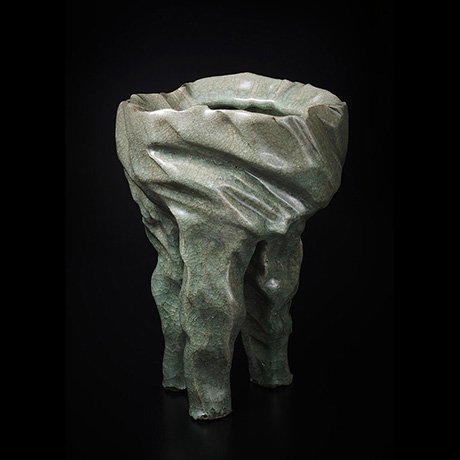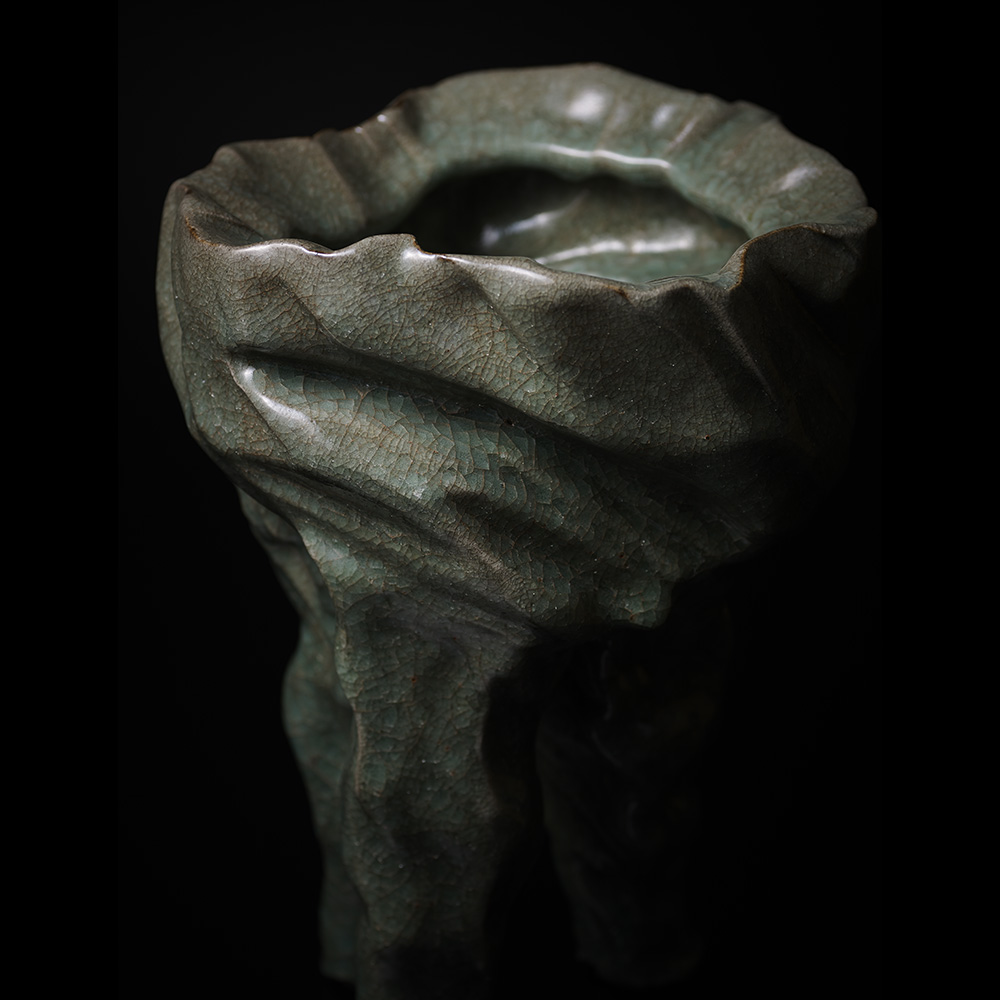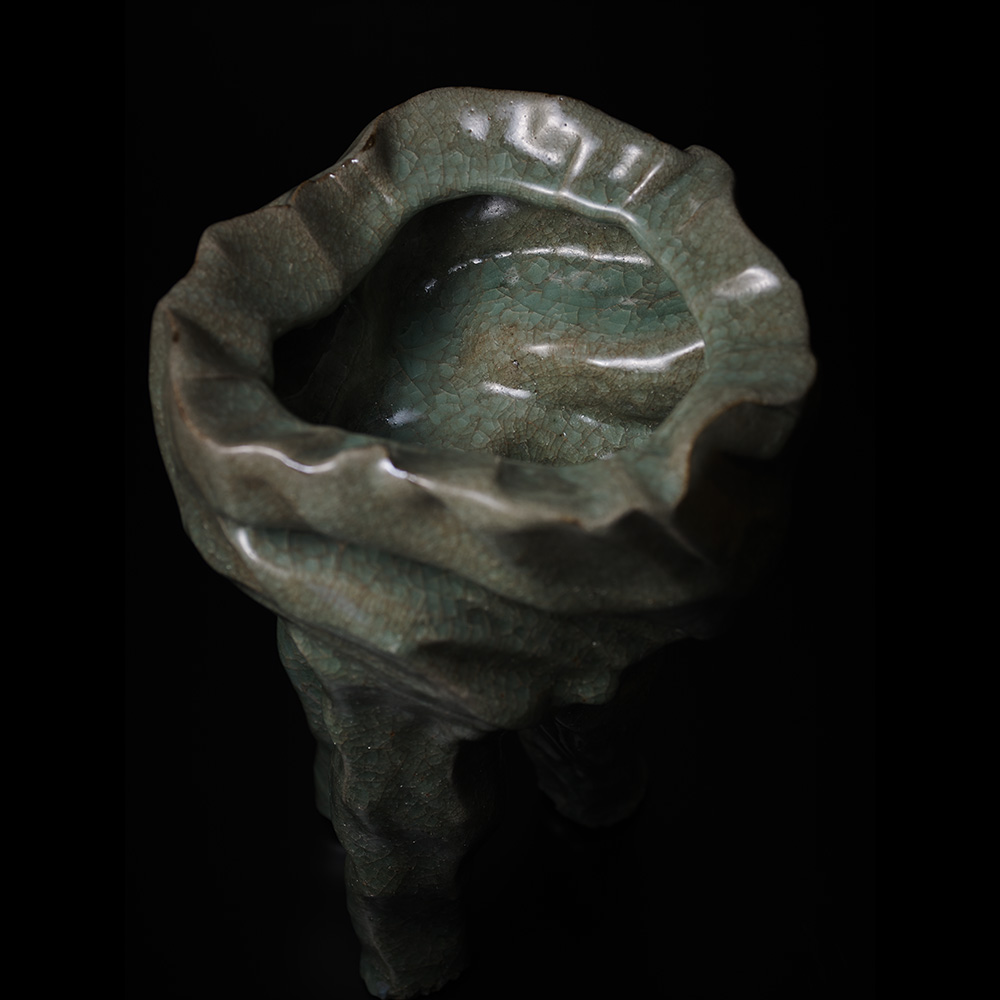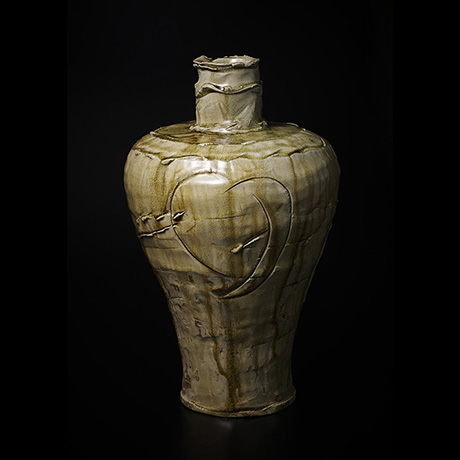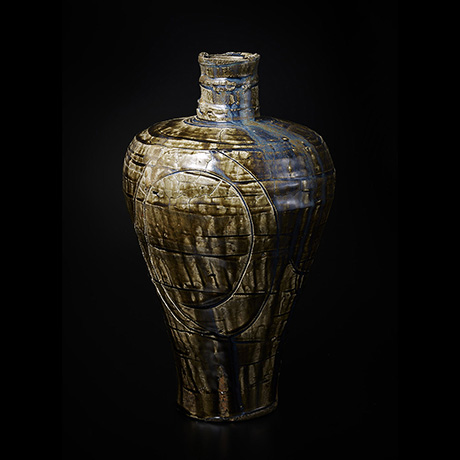-
箱
Box -
-
サイズ
Size - 28.5/H39.0cm
中国の殷時代には多くの青銅器が誕生している。鼎とは煮炊きや祭祀の儀式などに使われたもので、強大な権力を持った支配層の権威の象徴であった。その後、青銅器の器形は憧れを持って陶磁器の形にも転用される。嶺男先生は青銅器の形を大きく発展させて本品のような創作的な作品を誕生させた。
棒で表面を力強く叩き押し付け、捻り、入念入魂する。この技法を用いたものを嶺男先生の後期縄文などと称している。青磁の釉薬は特に焼成温度や、湿気や焚き方で窯の中の雰囲気も変わり、色調も釉色もその影響を受ける。透明感のある表面に対して、器中の青磁釉が溜まった所の二重貫入も最大の見所である。圧巻の造形と魅力的な青磁釉の出会いは日本陶芸史に残る作品となった。
2007年東京国立近代美術館他『青磁を極める 岡部嶺男展』出展作品
2019年東京都庭園美術館『アジアのイメージ 日本美術の「東洋憧憬」』出展作品
小学館「岡部嶺男作品集 陶愁」掲載作品
The Shang Dynasty in China saw the birth of many bronze vessels.
“鼎”, a ding, was used for cooking and rituals, and was a symbol of authority for the powerful ruling class. Later on, the shapes of bronze vessels were adapted to ceramic forms with admiration, and Mineo greatly developed the shapes of bronze vessels to create artworks like this one. The surface is vigorously struck with a stick, pressed and twisted, and the spirit is put into it. This technique is referred to as “late Jomon” by Mineo. Celadon glazes are especially affected by firing temperature, humidity and firing methods, which in turn affect the atmosphere in the kiln and the color of the glaze. In contrast to the transparent surface, the double penetration where the celadon glaze accumulates in the vessel is also a major highlight. The encounter between the stunning form and the attractive celadon glaze has become a noteworthy work on the history of Japanese ceramics.
*Listed in the exhibition of “Mineo Okabe: the Retrospective” the National Museum of Modern Art, Tokyo in 2007
*Listed in The East as Longed-for Other in Japanese Art”

